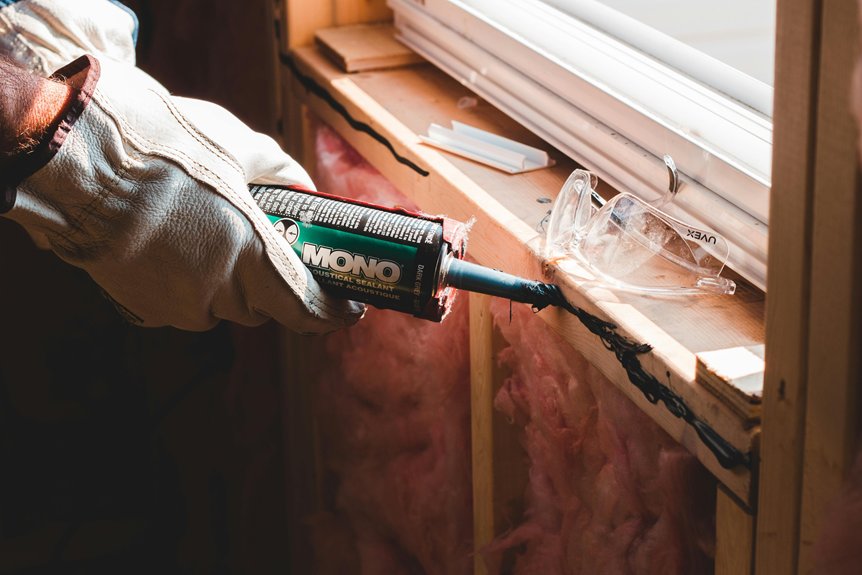Waterproof insulating sealants are materials that effectively block water while providing electrical or thermal insulation, making them essential for both indoor and outdoor applications. The various types include polyurethane, silicone, butyl rubber, and polysulfide, each offering specific advantages such as flexibility, durability, or UV resistance.
These sealants are commonly utilised for sealing windows, pipes, roofs, and industrial equipment. Choosing the appropriate sealant is crucial and depends on the environment as well as material compatibility.
Recent innovations in waterproof insulating sealants have significantly enhanced their performance and longevity, making them even more effective in protecting against moisture and ensuring reliable insulation.
Types and Key Properties of Waterproof Insulating Sealants
Different types of waterproof insulating sealants are designed to cater to various construction and repair needs, each possessing unique properties that make them suitable for specific applications.
Polyurethane-based sealants are renowned for their durability and resistance to abrasion, making them ideal for heavy-duty use. They also provide excellent adhesion to a variety of surfaces.
Butyl rubber sealants are recognised for their exceptional water resistance and insulation capabilities, often employed in industrial environments.
Silicone-based sealants offer excellent flexibility and UV resistance, making them perfect for both outdoor and indoor applications.
Polysulfide sealants provide strong resistance to water and oxidation, maintaining robust bonds over time.
Polyether and MS polymer sealants are versatile options, particularly effective in wet conditions.
These sealants share key characteristics such as durability, water resistance, and flexibility, ensuring they can withstand environmental challenges while delivering effective sealing solutions across a variety of projects.
Common Applications and Best Usage Practices
Waterproof insulating sealants are versatile and essential for a wide array of applications in both residential and commercial settings across the UK.
In domestic environments, they’re commonly employed around sinks, baths, showers, and windows to prevent water ingress and mitigate issues such as mould, rot, and drafts. Sealants also offer protection for basement walls, outdoor furnishings, and fixtures against weather-related damage. Their ability to withstand varying weather conditions makes them particularly useful outside.
In commercial and industrial contexts, waterproof sealants are vital for sealing roofing seams, foundation joints, and marine components that face harsh conditions. They play a crucial role in sealing HVAC systems, pipes, and factory equipment to avert moisture damage and corrosion.
To ensure proper application, it’s important to clean surfaces thoroughly, utilise a caulking gun for an even bead, and smooth the sealant to achieve a watertight finish.
Regular inspections and timely repairs are essential for maximising the longevity and effectiveness of the sealant, ensuring it continues to protect against the elements.
Selecting the Right Sealant for Your Project
Selecting the appropriate sealant for a project begins with a clear understanding of the specific performance requirements and conditions of the application.
To achieve a successful outcome, it’s essential to consider factors such as bond strength, temperature stability, and weather resistance. For instance, some sealants exhibit excellent adhesion to a variety of surfaces but may require primers, whilst others can endure extreme temperatures or prolonged UV exposure.
- Prioritise sealants with robust adhesion suitable for various materials including metal, glass, and wood.
- Opt for formulations designed to withstand outdoor conditions, accommodating temperature fluctuations and moisture.
- Select flexible options that can accommodate movement in materials, effectively preventing cracking.
In addition, choosing a sealant with UV and weather resistance is crucial for outdoor applications to prevent degradation over time, ensuring long-term performance.
Innovations and Industry Standards in Sealant Technology
Recent advancements in sealant technology have significantly improved the materials utilised in construction and repair projects across the UK. Innovations such as flexible polymers and hybrid formulations enhance durability, particularly under varying environmental conditions. Sealants are now tested thoroughly, ensuring their performance over extended periods and across different climates. Many modern sealants are now eco-friendly, non-toxic, and free from volatile organic compounds (VOCs), making them safer for both indoor and outdoor applications. The evolution of waterproofing technology ensures that sealants can effectively prevent water penetration, providing long-lasting protection against the elements. Furthermore, recent developments have improved adhesion to a variety of surfaces, including those that are typically challenging. The incorporation of primers has played a vital role in this enhancement. Sealants now demonstrate better temperature stability, allowing them to perform effectively in extreme weather conditions. These innovations contribute to creating more reliable, sustainable, and resilient buildings, benefiting communities and individuals alike.
Conclusion
Waterproof insulating sealants are vital for safeguarding structures against moisture and fluctuations in temperature. The selection of the appropriate type hinges on the specific application and the desired characteristics, such as flexibility or durability.
Recent advancements in the industry have led to improved performance and ease of use in sealants. By familiarising oneself with the various options and standards available, users can ensure effective sealing solutions that enhance the longevity and safety of buildings.
Proper selection and application are crucial for achieving reliable and enduring results in any project. Understanding the right waterproof sealant can make a significant difference in maintaining the integrity of structures across the UK.

